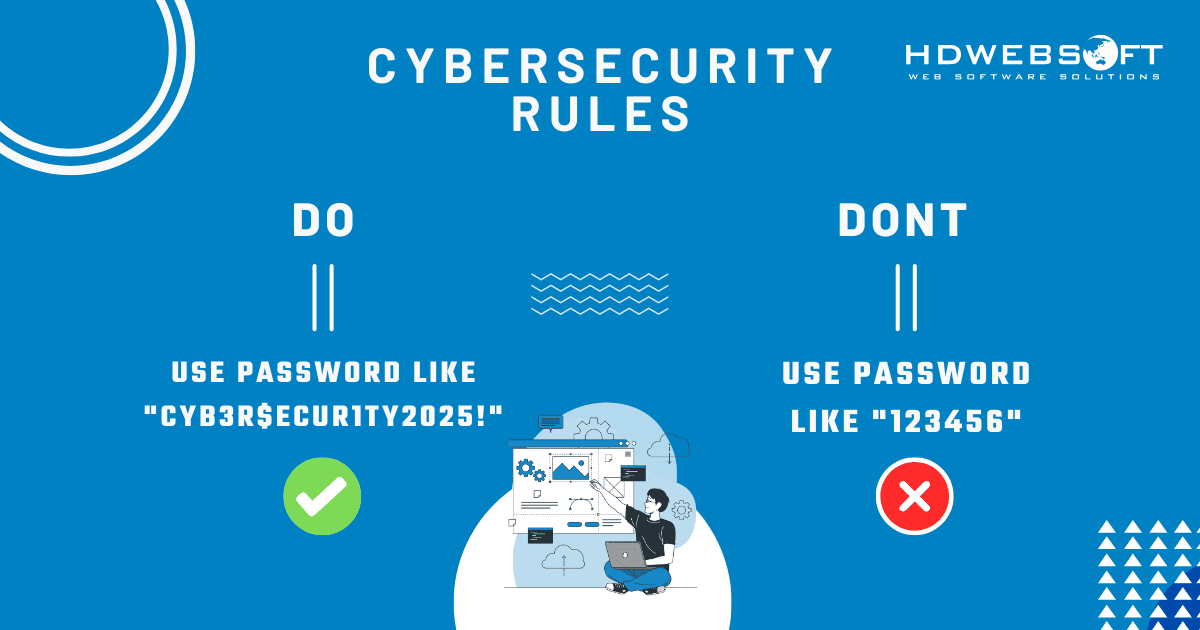Web Security Best Practices for Modern Applications in 2025

Web security has become more critical than ever as cyber threats continue to evolve and target modern applications. With the increasing sophistication of attacks and the growing complexity of web applications, developers must stay ahead of security challenges to protect their users and data.
Understanding the Current Threat Landscape
The cybersecurity landscape in 2025 presents unique challenges:
- AI-powered attacks: Cybercriminals are leveraging AI to create more sophisticated and targeted attacks
- Supply chain vulnerabilities: Third-party dependencies introduce new security risks
- Cloud security challenges: Multi-cloud environments create complex security scenarios
- API security concerns: The proliferation of APIs creates new attack vectors
Essential Security Practices
1. Implement Zero Trust Architecture
Zero Trust security assumes that no user or device should be trusted by default, even if they're inside the network perimeter.
Key principles: - Verify every user and device - Apply least privilege access - Monitor and log all activities - Encrypt data in transit and at rest
2. Secure API Development
APIs are often the weakest link in modern applications. Implement these practices:
- Authentication and authorization: Use OAuth 2.0 and JWT tokens
- Rate limiting: Prevent abuse and DDoS attacks
- Input validation: Sanitize all incoming data
- API versioning: Maintain backward compatibility securely
3. Content Security Policy (CSP)
CSP helps prevent cross-site scripting (XSS) attacks by controlling which resources can be loaded.
// Example CSP header
Content-Security-Policy: default-src 'self'; script-src 'self' 'unsafe-inline'; style-src 'self' 'unsafe-inline'
4. Secure Headers Implementation
Implement security headers to protect against common attacks:
- HSTS: Force HTTPS connections
- X-Frame-Options: Prevent clickjacking
- X-Content-Type-Options: Prevent MIME type sniffing
- Referrer-Policy: Control referrer information
Development Security Practices
Secure Coding Standards
- Input validation: Never trust user input
- Output encoding: Prevent XSS attacks
- SQL injection prevention: Use parameterized queries
- Error handling: Don't expose sensitive information
Dependency Management
- Regularly update dependencies
- Use tools like npm audit or Snyk
- Implement dependency scanning in CI/CD
- Monitor for known vulnerabilities
Security Testing
- Static Application Security Testing (SAST): Analyze source code
- Dynamic Application Security Testing (DAST): Test running applications
- Interactive Application Security Testing (IAST): Real-time vulnerability detection
- Penetration testing: Simulate real-world attacks
Infrastructure Security
Container Security
With the widespread adoption of containerization:
- Use minimal base images
- Scan images for vulnerabilities
- Implement runtime security monitoring
- Follow container security best practices
Cloud Security
- Configure cloud services securely
- Use cloud-native security tools
- Implement proper access controls
- Monitor cloud environments continuously
Privacy and Compliance
Data Protection
- Implement data minimization principles
- Use encryption for sensitive data
- Establish data retention policies
- Ensure secure data disposal
Regulatory Compliance
Stay compliant with relevant regulations:
- GDPR: European data protection
- CCPA: California privacy rights
- HIPAA: Healthcare data protection
- SOX: Financial reporting requirements
Incident Response and Recovery
Preparation
- Develop incident response plans
- Establish communication protocols
- Train team members regularly
- Maintain updated contact lists
Detection and Analysis
- Implement comprehensive logging
- Use security information and event management (SIEM)
- Monitor for indicators of compromise
- Analyze security events promptly
Containment and Recovery
- Isolate affected systems quickly
- Preserve evidence for investigation
- Implement recovery procedures
- Document lessons learned
Emerging Security Technologies
AI and Machine Learning in Security
- Behavioral analysis: Detect anomalous user behavior
- Threat intelligence: Predict and prevent attacks
- Automated response: React to threats in real-time
- Fraud detection: Identify suspicious activities
Quantum-Resistant Cryptography
Prepare for the quantum computing era:
- Research post-quantum cryptography
- Plan migration strategies
- Update encryption standards
- Monitor NIST recommendations
Building a Security Culture
Team Training
- Regular security training sessions
- Stay updated on latest threats
- Participate in security communities
- Practice incident response scenarios
Security by Design
- Include security from project inception
- Conduct threat modeling exercises
- Perform regular security reviews
- Automate security testing
Conclusion
Web security in 2025 requires a comprehensive, multi-layered approach that combines technical controls, secure development practices, and a strong security culture. By implementing these best practices and staying informed about emerging threats, developers can build more secure applications that protect users and business assets.
Remember that security is not a one-time implementation but an ongoing process that requires continuous monitoring, updating, and improvement. Stay vigilant, keep learning, and always prioritize security in your development workflow.